Power quality monitoring serves two main purposes:-
1) Benchmarking purposes: tracking loading and PQ indices (eg, harmonics, unbalance, flicker) over time, comparing against utility guidelines or known standards from the United Kingdom Engineering Recommendations, IEC and IEEE.
In Singapore, limits introduced in the Energy Market Authority’s Transmission Code took many references from the UK especially. An example is the voltage flicker / fluctuation limits; they are referenced to UK E.R P28: Planning Limits for Voltage Fluctuation Caused By Industrial, Commercial and Domestic Equipment in the United Kingdom. Another example is the Voltage harmonics limits which were referenced to the UK E/R G5/4: Planning levels for harmonic voltage distortion and the connection of non-linear equipment to the transmission networks and distribution networks of the United Kingdom.
In the market, there are two types of PQ monitoring available: permanent or portable. Traditionally, permanent PQ monitoring was exclusive to the utility companies. However over time, as PQ monitoring devices became more affordable and due to increased awareness regarding power quality, many buildings and manufacturing plants started to have PQ monitoring in place, sometimes integrated together with their internal Building Management System (BMS).
One known use of such system here in Singapore is to assist the facility managers whether can they restart / normalize their equipment (eg chillers) after they tripped following a voltage dip in the network. By having both current and voltage waveforms captured during a dip, it becomes a handy tool to inform the manager whether the fault (and hence the dip) originated upstream or an internal plant fault. Knowing that the fault originated upstream in the network will enable the manager to skip some checklists, hence faster restoration time (and less downtime).
2) Investigation purposes: whereby it has been determined that a power quality meter / instrumentation is necessary to aid in solving a particular power quality problem. In this particular case, a portable power quality meter is almost used. Note: there are instances too whereby a permanent type of PQ meter was made portable by installing it in some portable hard-case housing.
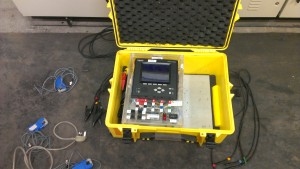
I have used several portable power quality meters, the first one being the HIOKI 3196 during my university internship days. I then went on to use other PQ meters like the Fluke 435 Series I, Fluke 434, Fluke 1750, Fluke 345, Hioki PW3198, Dranetz-BMI PX-5 Power Xplorer and Elspec G4500 Blackbox. These are the meters that I have used on an almost daily basis and I will be describing their strengths / weaknesses here based purely on my own experiences. (Note: I am not tied to any PQ meters manufacturer)
1) Fluke 435 Series 1
The Fluke 435 is an IEC 61000-4-30 Class A PQ instrumentation. It has several recording modes like Harmonics, Flicker, Dips/Swells, Inrush and a “Logger” mode.
Hardware: There were little differences between the Fluke 434 n 435. The F435 however have the “Power Logger” mode, hence trending of various parameters was a useful function. The major drawback is that when in “Power Logger” mode, the meter would not be able to capture any waveforms. In the event of a voltage dip for instance, a text one-liner will indicate that a dip has detected during the measurement, but no waveforms whatsoever. Another drawback is the maximum recording of 100 parameters only. This is a major drawback for me personally, as that will mean cutting down on the trending of the no. of individual harmonic orders. There is also no high speed transient capture capability.
Software: Powerlog has improved over the years, with the latest version (4.02) having a “clean and nice look” to it. It is adequate for most power quality trending analysis. It has also a useful data distribution histogram for statistical analysis. However my personal preference is to display harmonic current in terms of RMS amperes or in Total Demand Distortion (TDD). To do that, I will have to export out the fundamental current and various individual harmonic current % and re-do the calculation manually in excel. In certain applications, one may need to record the various parameters in 10-min trending (for eg) but requires 30-min values for maximum demand purposes. There is no feature to do that here, other than setting the F435 to record in 30-min intervals in the first place.
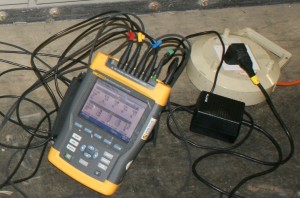
2) Fluke 434
Hardware: I had used the F434 version without the logging memory function. Hence there is no capability for it to log down trending values (eg aggregated 10-min trending). Hence this was its major handicap.
Software: Having used other software, Flukeview isn’t really good for me, but that’s just my personal opinion.
3) Fluke 345
The Fluke 345 is a single-phase AC/DC power quality clamp that I personally used to measure DC amperes in the presence of AC in Grid-Tied PV applications, to check for the presence of DC injection back to Grid.
Hardware:
Truth to be told, there isn’t any instrumentation available in measuring small amount of DC in the presence of large AC. This is a great tool nevertheless for spot-measurements and verification of loadings when installing a portable power quality meter.
Software:
via PowerLog. Same comments as above.
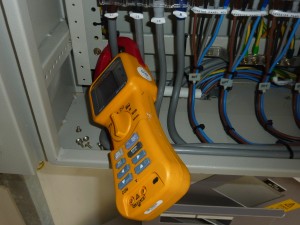
4) Hioki PW3198.
This is the latest PQ meter that recently arrived in my hands. It is a Class A PQ meter, able to record trending and capture waveforms too if certain thresholds set are breached.
Hardware:
In my opinion, this is a much better PQ meter than the Fluke 435 Series 1. There is no limitation on no. of parameters to be recorded and it can record trendings and waveforms together (that is how a PQ meter should function, in my opinion). It is also able to capture high speed transient. Two disadvantages that I come across are as follows: 1) Two voltage inputs (+ and -) for every phase, hence the physical connection for a three phase wye will be different from a three phase delta. I have witnessed minor accidents where users were not familiar in a three phase delta setup, causing short-circuits in the PQ meter. 2) For connection of custom Non-Hioki clamps to it, it can only accept clamps with certain mv/A ratio only (hence not fully 100% customizable)
Software:
Similar to the PowerLog, it is adequate for most power quality analysis. Also to add, it is able to trend out harmonic current values of the individual orders in terms of RMSamperes, which is good. It cannot however total up these values and give the user the total harmonic current (in RMS amperes). I have to export them out and calculate them manually via Excel. Another plus is that it is able to give 30min interval values for maximum demand, as compared to PowerLog via the F435.

5) Dranetz-BMI PX-5 Power Xplorer
This is a Class A PQ meter from Dranetz-BMI with hi-speed transient capturing capability. It is able to record trending and capture waveforms at the same time.
Hardware: It has similar capability as the Hioki PW3198. Even its voltage input configurations are similar, meaning the physical configuration at the voltage inputs will be different between a 3 phase wye and a 3phase delta connection. IEC 61000-4-30 gives guidelines on how the average aggregation of the trending values must be:
- By default; data assessed per 10min RMS values
- 10min interval -> 3000 10-cycle measurements
- Average: from 3000 x 10-cycle RMS values
- Minimum of 3000 x 10 cycle RMS values
- Maximum of 3000 x 10 cycle RMS values
If you are familiar with PQ meters, there is also a maximum / minimum trending plot. On how this is implemented very much depends on the manufacturer, as it is not specified in the Standard. Dranetz-BMI used a single-cycle maximum/minimum value, meaning the maximum/minimum RMS value you will see is from a single cycle, not from a set of 10cycles. This helps greatly when one is doing troubleshooting purposes, and the waveform capturing mode didn’t activate as it was still within the ‘thresholds’.
There are also downsides for the PX-5. The flexible clamps that came with the meter were the LEM Flex RR3035A. Its connection to the PX-5 is via a ‘coaxial cable’ connection. Over time due to wear and tear, the ‘coaxial cable’ became loose easily and resulted in many unusually high current spikes recorded. Another problem I encountered was the overload of the circuit signals due to the wrong setting of the clamps’ measuring range (it has a range of 30/300/3000A). There was one occasion when I had set a low 300A measuring range and left it over night. Due to increase of loads in night time (loads went up to above 1000A, the clamps became saturated and caused many high frequency voltage transients to be recorded. I admit that it was my mistake, but I would have though that voltage and current were separate issues altogether!
Software: Dranview is by far the best power quality analyzing software ever. Nothing comes close to it in my opinion. The option of changing harmonic current to THD%, TDD% and its absolute values in terms of its RMS can be simply be done with a few clicks. Statistical analysis can be done with just adding on some tables to the trending graphs. I could go on and on over here !
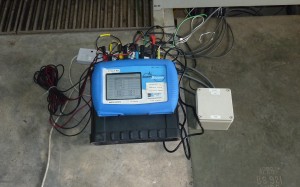
6) Fluke 1750 Power Recorder
The F1750 prides itself as a PQ meter that “records everything” thru its “adaptive” threshold. It was previously an RPM PQ meter, acquired by Fluke. It has also a high speed transient capture capability.
Hardware: Though it has the benefits of “recording everything”, every cycle of it without setting up any thresholds it is not a Class-A compliant meter. You will not see in any of the specs saying it is Class A compliant but you may read that it measures according to Class-A algorithms. This is because its voltage accuracy is +/-0.2% instead of as required +/- 0.1%. And it does not have the ability to be time-synched to a GPS (though this is largely a non-issue to me personally as the practicality of connecting a GPS module to a PQ meter inside a switchroom is almost zero). Despite its shortcomings, the F1750 is useful in troubleshooting purposes and finding faults in a system for a short period of measurement. When a PQ meter captures everything, it will be up to the PQ investigator to be the smart one to decipher what is important or not.
Software: The current version is Power Analyze 2.4. It is still very much a basic analyzing software. I have used it since its early days whereby things like unbalance and flicker were not available options in the software. Things were then added on as time goes by. And if you notice properly, voltage/current unbalance can be found under the ‘THD’ tab. I cannot understand why though. I suspect that it ran out of tabs to display!
It can however gives me the individual order harmonic current in RMSamperes. Similar to the Hioki PW3198, I have to manually export the individual harmonic current (in amperes) out to calculate the total harmonic current in RMSamperes. However the ridiculous thing that I found is that the software only allowed me to export one individual order at each time only. That means I have to export out 49 times for harmonic orders 2nd to 50th!
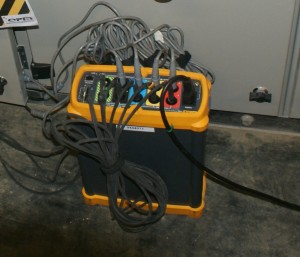
7) Elspec G4500 Blackbox
This is a port-over product from its permanent monitoring series. It is another PQ meter that prides itself in measuring every waveform (1024 samples per cycle for voltage) from start to end (I used the model which has 8GB memory). It is also a Class A compliant meter. It however lacks a high speed transient capture capability.
Hardware: It has an in-built router enabling wireless access to it. Physical inputs to the PQ meter are similar to F1750 / F435. Configurations whether it is measuring a three phase wye or three phase delta is configured via software. It has also an optional temperature probe. And it has these nice blue LED lights above every current and voltage input; to indicate if it is connected and measuring. Setting up is via web interface and is quite straightforward.
Software: An SQL database is firstly needed to be installed on the downloading / viewing PC. It has a basic software, adequate for most power quality analysis. It is able to trend out values in terms of both the IEC 61000-4-30 Class A guidelines or even in cyclic RMS (which will be more accurate). It can also trend out individual and total harmonic current in RMSamperes. Its biggest drawback and main handicap is its downloading and “unzip portion”, whereby it can easily takes half an hour to display the trending / waveform recorded over one week of measurement. In this sense, it is not very practical in my opinion, as many times, a PQ investigator or the Customer will want to view the data recorded almost immediately. A half an hour is simply too long. (used a Lenovo Thinkpad X220 I5-2520 4GB). My opinion is that it was originally designed for a permanent installation, whereby data is being brought back to the PC/server to download and process at fixed short intervals and not in the portable setup scenario whereby one week of data is downloaded and processed at once. It is a neat meter, if only the the downloading/viewing issue can be resolved.
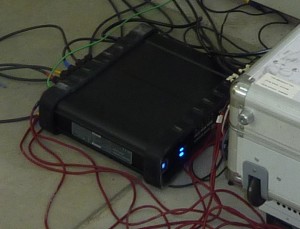
In my opinion, if I am to purchase new PQ meters it will still be
5) Dranetz-BMI PX5 for its per cycle min/max and also its powerful software.
These posts are great.
It will be better when more professionals in the PQ community can contribute their knowledge and share their experience here.
With there not being much to read up on in terms of PQ monitoring online this is much appreciated!! Great read!
Thanks much for this page!
I found the software setup and file naming of the Elspec G4500 terrible (it takes days to figure it out). However, it is nice to be able to set it up and forget it for awhile, since it can record for such a long time.
Consider doing a review of the Powersight PS4500. Maybe you can compare sample rates and logging durations.
I found few PQ meter companies offer high voltage probes (at least 5kV). Powersight does.
I also found that the sales guys don’t know much about the details of their product.